- Latest available (Revised)
- Original (As made)
The Chemicals (Hazard Information and Packaging) Regulations 1993
You are here:
- UK Statutory Instruments
- 1993 No. 1746
- SCHEDULE 3
More Resources
Status:
This is the original version (as it was originally made). This item of legislation is currently only available in its original format.
Regulations 2(1) and 7(5)
SCHEDULE 3THE CLASSIFICATION OF AND HAZARD WARNING SIGNS FOR SUBSTANCES (INCLUDING PREPARATIONS) DANGEROUS FOR CARRIAGE
PART ITABLE OF CHARACTERISTIC PROPERTIES, CLASSIFICATION AND HAZARD WARNING SIGNS
| 1 | 2 | 3 | ||||
|---|---|---|---|---|---|---|
| Characteristic properties of the substance | Classification and category of danger | Hazard warning sign | ||||
| ||||||
A substance which— (a) has a critical temperature below 50°C or which at 50°C has a vapour pressure of more than 3 bars absolute; and (b) is carried at a pressure of more than 500 millibars above atmospheric pressure or in liquefied form, other than a toxic gas or a flammable gas. | Non-flammable compressed gas | 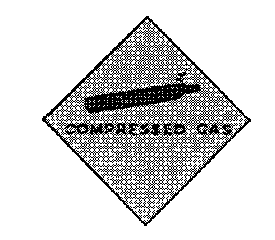 | ||||
| A substance which has a critical temperature below 50°C or which at 50°C has a vapour pressure of more than 3 bars absolute and which is toxic. | Toxic gas |  | ||||
| A substance which has a critical temperature below 50°C or which at 50°C has a vapour pressure of more than 3 bars absolute and is flammable(see Note 1). | Flammable gas | 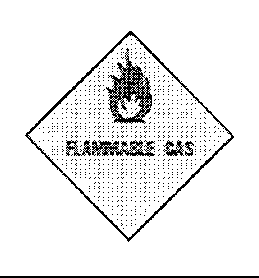 | ||||
A liquid with a flash point of 55°C or below except a liquid which— (a) has a flash point equal to or more than 21°C and less than or equal to 55°C; and (b) when tested at 55°C in the manner described in Schedule 2 to the Highly Flammable Liquids and Liquefied Petroleum Gases Regulations 1972(1) does not support combustion. (see Notes 1 and 2) | Flammable liquid | 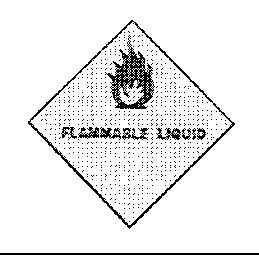 | ||||
| A solid which is readily combustible under conditions encountered in carriage or which may cause or contribute to fire through friction. | Flammable solid | 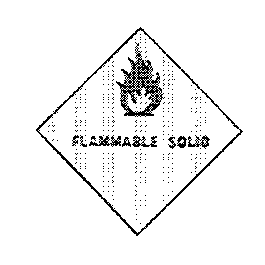 | ||||
| A substance which is liable to spontaneous heating under conditions encountered in carriage or to heating in contact with air being then liable to catch fire. | Spontaneously combustible substance | 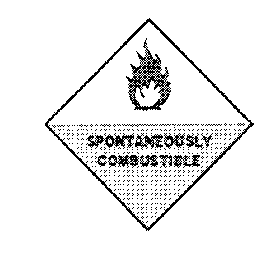 | ||||
| A substance which in contact with water is liable to become spontaneously combustible or to give off a flammable gas. | Substance which in contact with water emits flammable gas | 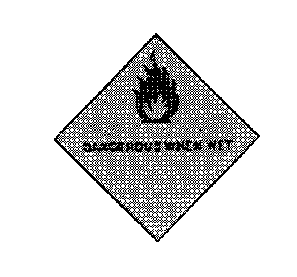 | ||||
| A substance other than an organic peroxide which, although not necessarily combustible, may by yielding oxygen or by a similar process cause or contribute to the combustion of other material. | Oxidizing substance | 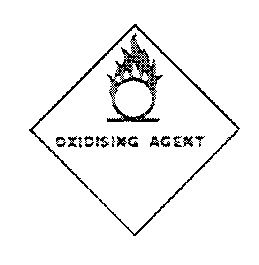 | ||||
A substance which is— (a) an organic peroxide; and (b) an unstable substance which may undergo exothermic self-accelerating decomposition. | Organic peroxide | 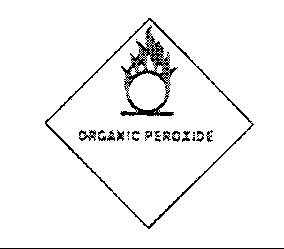 | ||||
| A substance known to be so toxic to man as to afford a hazard to health during conveyance or which, in the absence of adequate data on human toxicity, is presumed to be toxic to man. | Toxic substance | 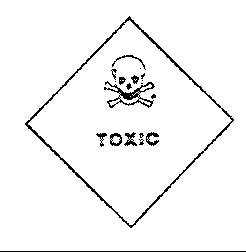 | ||||
| A substance known to be toxic to man or, in the absence of adequate data on human toxicity, is presumed to be toxic to man but which is unlikely to afford a serious acute hazard to health during carriage. | Harmful substance |  | ||||
A substance which by chemical action will— (a) cause severe damage when in contact with living tissue; (b) materially damage other freight or equipment if leakage occurs. | Corrosive substance |  | ||||
| A substance which is listed in Part II of the approved carriage list and which may create a risk to the health or safety of persons in the conditions encountered in carriage whether or not it has any of the characteristic properties referred to above. | Other dangerous substance |  | ||||
| Packages containing two or more dangerous substances which have different characteristic properties. | Mixed hazards | 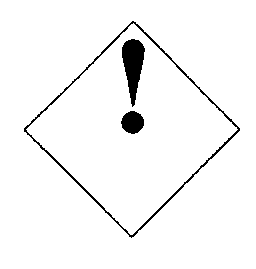 | ||||
PART IISPECIFICATION OF HAZARD WARNING SIGNS
1. The hazard warning sign to be used on a label shall be that shown in column 3 of Part I of this Schedule for the classification of the substance shown in the corresponding entry in column 2 of that Part and the signs shall conform in form and colour to those shown in the said column 3, except that—
(a)in the case of the signs for the classifications “non-flammable compressed gas”, “flammable gas”, “flammable liquid” and “substance which in contact with water emits flammable gas”, the symbol and the lettering may be in white;
(b)in the case of the sign for the classification “spontaneously combustible substance”, the lettering may be in white;
(c)in place of the word “toxic”, the word “poison” may be used wherever it occurs;
(d)in place of the word “flammable”, the word “inflammable” may be used wherever it occurs; and
(e)the sign may show the class number in accordance with the International Maritime Dangerous Goods Code issued by the International Maritime Organisation or the Technical Instructions for the Safe Transport of Dangerous Goods by Air issued by the International Civil Aviation Organisation.
2. The words shown within the hazard warning sign may be omitted, but in such a case those words shall be shown on the package or label adjacent to the sign.
3. Each hazard warning sign shall be in the form of a square set with its sides at an angle of 45° to the vertical.
4. Hazard warning signs shall have a line of the same colour as the symbol, 5 millimetres inside the edge and running parallel to it. (The broken line which surrounds each sign delineates the edge of that sign and need not be shown.)
PART IIIVISCOUS PREPARATIONS NOT REQUIRED TO BE CLASSIFIED AS FLAMMABLE
1. For the purposes of Part I of this Schedule, preparations which comply with the following conditions shall not be required to be classified as flammable, namely:—
(a)the preparation is not classified as toxic or corrosive;
(b)the preparation is a solution or homogeneous mixture which does not contain nitro-cellulose;
(c)the flash point of the preparation is equal to or greater than 21°C;
(d)in a suitable solvent separation test, the solvent which separates is not more than 3 per cent. of the volume of the preparation; and
(e)the viscosity of the preparation when determined at 23°C in a flow cup conforming to the International Standards Organisation Standard ISO 2431—1984 or British Standard BS3900: Part A6—1986 and having a jet diameter of 6mm is—
(i)in a case where the preparation contains not more than 60 per cent. of a flammable liquid with a flash point of 55°C or less, not less than 40 seconds, or
(ii)in any other case, not less than 60 seconds.
Options/Help
Print Options
PrintThe Whole Instrument
PrintThis Schedule only
Legislation is available in different versions:
Latest Available (revised):The latest available updated version of the legislation incorporating changes made by subsequent legislation and applied by our editorial team. Changes we have not yet applied to the text, can be found in the ‘Changes to Legislation’ area.
Original (As Enacted or Made): The original version of the legislation as it stood when it was enacted or made. No changes have been applied to the text.
More Resources
Access essential accompanying documents and information for this legislation item from this tab. Dependent on the legislation item being viewed this may include:
- the original print PDF of the as enacted version that was used for the print copy
- lists of changes made by and/or affecting this legislation item
- confers power and blanket amendment details
- all formats of all associated documents
- correction slips
- links to related legislation and further information resources
